Have you ever found yourself dealing with a clogged toilet and wondering if drain cleaner could be the solution?
We will explore what drain cleaner is, how it works, and whether it can be safely used in a toilet. We will also discuss the alternatives to using drain cleaner in a toilet, the risks involved, and how to properly use it.
If you’re facing a stubborn clog, keep reading to learn more about your options!
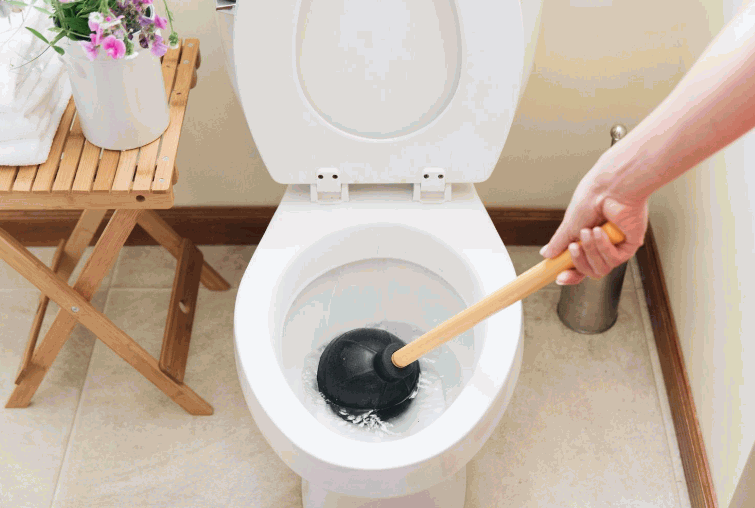
What Is Drain Cleaner?
Drain cleaner is a chemical product designed to unclog blockages in drains, particularly in toilets. It comes in various forms, including liquids, gels, or powders that work to dissolve or break down the substances causing the blockage.
When facing a clogged drain, choosing the right drain cleaner becomes crucial to efficiently resolve the issue. The chemical compositions of these cleaners vary depending on their intended use. Acid-based drain cleaners are effective for dissolving tough organic materials like hair and grease, while alkaline drain cleaners work well on blockages caused by food debris and soap scum. Enzymatic drain cleaners, on the other hand, use natural enzymes to break down organic matter safely.
Each type of drain cleaner serves a specific purpose in unclogging drains. Liquid drain cleaners are convenient and can be poured directly into the drain, while gels adhere to the pipe walls for longer contact time. Powders are ideal for deep-seated blockages that require prolonged contact to dissolve the obstruction.
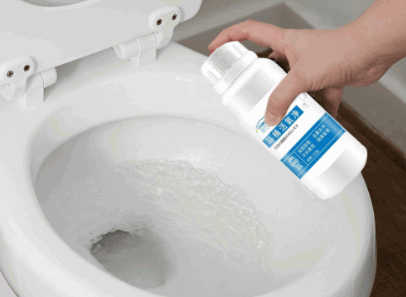
How Does Drain Cleaner Work?
Drain cleaners work by utilising chemical reactions to dissolve or dislodge materials that are causing blockages in toilets or drains. When poured into a blocked drain, the cleaner interacts with the obstruction to break it down, allowing water to flow freely.
One of the key components in most drain cleaners is sodium hydroxide, also known as caustic soda, which is highly alkaline and capable of breaking down organic matter like hair, grease, and soap scum. This chemical reaction generates heat, further aiding in the dissolution of the blockage. Some cleaners contain sulphuric acid, which can effectively dissolve tougher blockages like mineral build-up and tree roots.
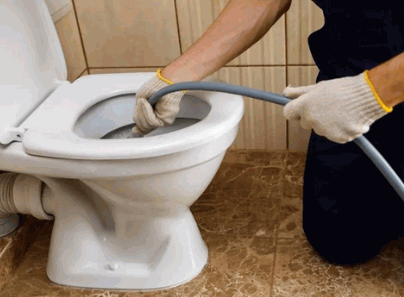
Can Drain Cleaner Be Used In A Toilet?
Yes, drain cleaner can be used in a toilet to address blockages that are obstructing the flow of water. It is essential to use a product specifically designed for toilets to prevent harm to the porcelain and plumbing system.
When using a drain cleaner in a toilet, always follow the manufacturer’s instructions carefully. It’s important to ensure that the product is safe for septic systems if you have one installed in your household. Remember that using excessive amounts of drain cleaner can actually worsen the blockage or cause harm. Avoid mixing different types of cleaners as this can result in harmful vapours. Consider wearing protective gloves and eye protection when handling these chemicals to prevent skin irritation or exposure to harmful substances.
Find out more: What To Do If Drains Are Blocked
Is It Safe To Use Drain Cleaner In A Toilet?
Using drain cleaner in a toilet can be effective, but it comes with risks. It is crucial to follow safety guidelines and use the product as directed to prevent harm to the toilet’s components or the user.
One important precaution is to wear protective gloves and eye goggles when handling drain cleaner to avoid skin or eye irritation. Ensure proper ventilation in the bathroom to prevent inhaling harmful fumes.
- Keep drain cleaners out of reach of children and pets as they are toxic substances that can cause serious harm if ingested.
- Never mix different drain cleaning products together as it can lead to dangerous chemical reactions.
It’s advisable to read the manufacturer’s instructions carefully and test a small amount of the cleaner in an inconspicuous area of the toilet before applying it extensively.
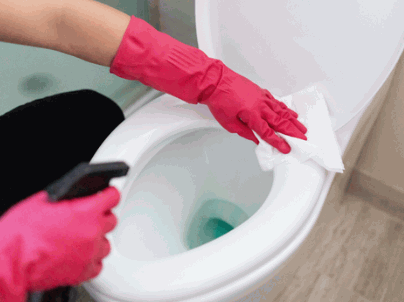
What Are The Alternatives To Using Drain Cleaner In A Toilet?
Plus drain cleaners, there are alternative methods to unblock toilets effectively. These include using a plunger, homemade solutions like bicarbonate of soda and vinegar, or employing a plumbing snake to remove stubborn blockages.
- For those who prefer a more natural approach, homemade solutions can work wonders. A mixture of bicarbonate of soda and vinegar can react to create a foaming action that helps break down blockages and eliminate odours in the process.
Plungers are a handy tool for dislodging blockages by creating suction and pressure to push the blockage further down the drain. They are simple to use and often very effective at dealing with common toilet blockages caused by organic matter or tissue build-up.
In cases where the blockage is particularly stubborn or deep within the pipes, a plumbing snake may be necessary. These flexible tools can reach further into the drain to physically break up and remove the blockage, providing a more thorough solution to persistent blockages.
Plunger
A plunger is a common tool used to unblock toilets by creating suction and pressure to dislodge blockages. To use a plunger effectively, ensure a tight seal around the drain and perform rapid plunging motions to clear the obstruction.
When using a plunger, remember to first check the water level in the toilet bowl; it should ideally cover the rubber part of the plunger. If the water level is too low, add some water to increase effectiveness. Position the plunger directly over the drain hole and push down gently to expel any trapped air. Then, with a firm grip, plunge vigorously, maintaining the seal without breaking it. Alternate between forceful pushes and gentle pulls to create the necessary pressure for dislodging the blockage.
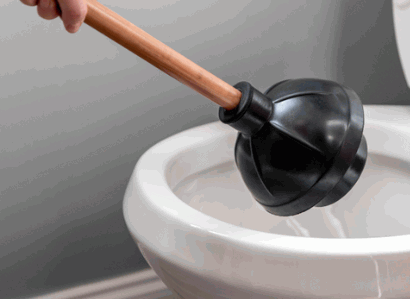
Plumbing Snake
A plumbing snake, also known as a drain auger, is a flexible tool used to reach deep into drains and break up blockages that are challenging to clear with a plunger. By inserting the snake and rotating it, it can hook onto debris and pull it out.
When dealing with a stubborn blockage in your toilet, a plumbing snake can be a lifesaver. Its ability to navigate the twists and turns of pipes makes it effective for removing blockages caused by a build-up of hair, grease, or other debris.
- Operating a plumbing snake requires a steady hand and patience. Start by inserting the snake slowly into the drain until you feel resistance.
- Then, gently rotate the handle while applying slight pressure to push through the blockage.
- Once the snake has grabbed onto the obstruction, carefully retract it, pulling out the blockage and restoring proper flow to your toilet.
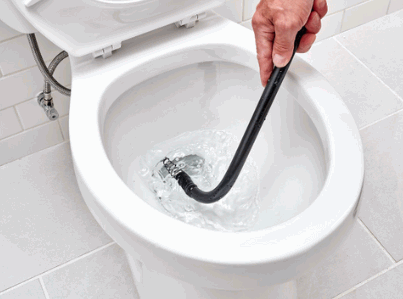
Homemade Solutions
Homemade solutions like a mixture of bicarbonate of soda and vinegar can be effective in unblocking toilets naturally. The fizzing reaction between these ingredients can help break down organic blockages without the need for harsh chemicals.
Using homemade remedies not only saves money but also reduces the environmental impact of using chemical cleaners. DIY unblocking solutions are often gentler on your plumbing system and can prevent corrosion and damage in the long run. Ingredients like lemon juice and essential oils can add a pleasant fragrance to the mix, leaving your bathroom smelling fresh after unblocking. Recipes such as a combination of hot water, washing-up liquid, and Epsom salt can also tackle tough blockages effectively.
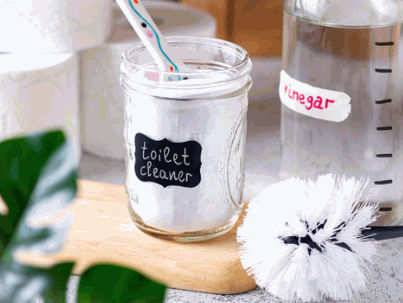
What Are The Risks Of Using Drain Cleaner In A Toilet?
Whilst drain cleaners can be effective, there are risks associated with their use in toilets. These include potential damage to toilet parts, exposure to harmful chemicals, and environmental impacts due to the disposal of chemical residues.
When using drain cleaners in toilets, there is a possibility of corrosion to the pipes, especially in older plumbing systems, leading to leaks or even burst pipes over time. Safety goggles and gloves should be worn to protect against direct contact with the caustic substances in these cleaners, which can cause skin and eye irritation or burns if mishandled.
The chemicals in drain cleaners can release toxic fumes when mixed with other substances in the pipes, posing a health risk to individuals in poorly ventilated spaces. It’s crucial to follow the instructions carefully and avoid overuse of these products to prevent clogs or blockages from worsening, which could result in expensive plumbing repairs.
Damage To Toilet Parts
One of the risks of using drain cleaner in a toilet is the potential for damage to the porcelain, seals, or plumbing components. Harsh chemicals in some cleaners can corrode or weaken these parts, leading to leaks or malfunctions.
When corrosive substances come into contact with the porcelain of the toilet bowl, they can cause unsightly etching or discolouration, compromising its integrity. Seals within the tank and plumbing connections are sensitive to these chemicals and can deteriorate over time. This deterioration can result in water leaks, which not only damage the floor but also invite mould growth.
Preventive measures include regular maintenance with eco-friendly solutions and avoid using harsh chemicals altogether. Opting for professional plumbing inspections can help catch early signs of wear and tear, preventing costly repairs in the long run.
Harmful Chemical Exposure
Another risk of using drain cleaners in toilets is the potential exposure to harmful chemicals present in these products. Direct contact with the skin or inhalation of fumes can lead to skin irritation, respiratory issues, or other health hazards.
Chemical exposure from drain cleaners can have severe consequences on the human body. For instance, some common ingredients found in these cleaners are highly corrosive and can cause burns if they come into contact with the skin.
Inhaling the fumes can irritate the respiratory system, leading to coughing, throat irritation, and in severe cases, difficulty breathing. Long-term exposure to these toxic substances can even result in chronic health conditions.
Environmental Impact
Using drain cleaners in toilets can have negative environmental impacts due to the release of chemical residues into water systems. These chemicals can harm aquatic life, contaminate water sources, and contribute to pollution.
When these toxic substances infiltrate our waterways, they disrupt the delicate balance of the ecosystem. Marine animals can suffer from poisoning, while plants and microorganisms may struggle to thrive in polluted environments. The accumulation of these chemical compounds in the water can lead to long-term consequences for both the environment and human health.
How To Properly Use Drain Cleaner In A Toilet?
To ensure the safe and effective use of drain cleaner in a toilet, it is essential to read the product instructions carefully, wear protective gear like gloves and goggles, and follow safety precautions to prevent accidents or mishandling.
Before starting the process, make sure the bathroom is well-ventilated to avoid inhaling any fumes. It’s crucial to choose a drain cleaner suitable for the type of clog or blockage you’re experiencing. Once you have the right product, pour the recommended amount into the toilet bowl, ensuring it reaches the affected area.
Allow the cleaner to work for the specified time as per the instructions. During this period, keep children and pets away from the treated area, and avoid using the toilet to prevent any accidental mixing of chemicals.
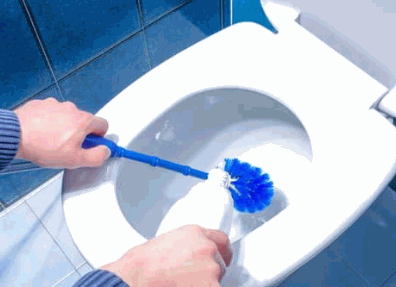
Read Instructions Carefully
Before using drain cleaner in a toilet, thoroughly read and understand the manufacturer’s instructions on application, dosage, and safety precautions.
By following the recommended instructions, you can prevent potential hazards and achieve the desired outcome more effectively.
It’s crucial to avoid mixing different types of drain cleaners as this can lead to dangerous chemical reactions.
Proper ventilation is essential when handling chemical products to minimise exposure to fumes and vapours.
Store the product in a cool, dry place away from children and pets to ensure safety.
Wear Protective Gear
When handling drain cleaner for toilet unblocking, it is crucial to wear protective gear such as gloves, goggles, or masks to shield against skin contact, splashes, or fumes. Personal protective equipment can prevent chemical-related injuries.
Protecting oneself from harmful chemical exposure is a top priority when dealing with drain cleaners.
Wearing proper safety equipment is not only a precaution but a necessity. Gloves protect hands from corrosive substances, goggles shield eyes from potentially harmful splashes, and masks prevent inhalation of toxic fumes. Ensuring the correct fit and quality of these safety items can significantly reduce the risk of accidents and injuries. Proper ventilation in the area of use can further minimise exposure to hazardous chemicals.
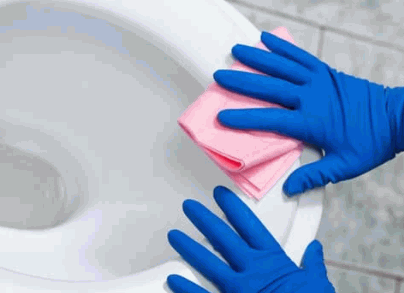
Follow Safety Precautions
To prevent accidents or mishaps when using drain cleaner in a toilet, adhere to essential safety precautions like keeping the area well-ventilated, storing chemicals out of reach of children, and never mixing different cleaners.
Always wear protective gear such as gloves and goggles when handling drain cleaners.
Make sure to read and follow the instructions on the product label carefully to avoid any potential risks, and in case of any contact with the skin or eyes, rinse thoroughly with water.
Dispose of empty drain cleaner containers properly and securely, preferably by following local hazardous waste disposal guidelines.
What To Do If Drain Cleaner Does Not Work In A Toilet?
If a drain cleaner fails to unclog a toilet effectively, it is advisable to seek assistance from a professional plumber who can diagnose and resolve the blockage using specialised tools and techniques.
If you find the drain cleaner isn’t doing the trick, the next step would be to evaluate the situation and determine the complexity of the blockage. Sometimes, tougher obstructions require more advanced intervention.
- Consider reaching out to a reputable plumbing service for a thorough inspection.
- Experienced plumbers have the expertise to detect underlying issues that may impede drainage and can provide tailored solutions.
- They possess state-of-the-art equipment like drain snakes, hydrojetters, and cameras to pinpoint and tackle the exact source of the problem.
Remember, when dealing with persistent blockages, entrusting the matter to a qualified professional ensures a prompt and effective resolution, safeguarding your plumbing system from more significant damage.
Consult A Professional Plumber
When a drain cleaner does not work in a toilet, it is essential to contact a licensed plumber for further inspection and resolution of the blockage. Plumbers have the expertise and tools to tackle complex blockages effectively.
Professional plumbers possess the necessary training to address a wide range of plumbing issues, including stubborn toilet blockages. Their knowledge of sewer systems enables them to identify the root cause of the blockage and implement appropriate solutions efficiently.
Plumbers are equipped with specialised equipment such as drain snakes and hydro-jetting machines, which can clear even the most stubborn obstructions in the toilet pipes. By enlisting the services of a skilled plumber, you not only ensure a quick resolution to the problem but also prevent potential damage and costly repairs in the future.
Try Alternative Methods
If drain cleaner proves ineffective, consider trying alternative methods like using a plunger, plumbing snake, or eco-friendly solutions to dislodge the blockage in a toilet before resorting to further chemical interventions.
For a blocked toilet, a plunger can often be a quick and effective solution. Proper technique involves creating a tight seal around the drain and plunging with firm, consistent pressure.
Another option is a plumbing snake, which can reach deeper into the pipes to break up the clog. Eco-friendly solutions such as bicarbonate of soda and vinegar or enzyme-based cleaners are gentler on the environment and can sometimes be as effective as harsh chemicals.
Remember to always follow safety precautions and consider these DIY methods before calling a professional plumber.



